How to Prune Geraniums
I can’t imagine a summer without geraniums. They’re so cheap at the store but they give you seemingly endless blossoms in vibrant colors that defy description.
If you aren’t into heavy garden maintenance, they’re also pretty easy to keep. They don’t demand a lot but they’ll keep offering up flowers until the deep freezes arrive.

We link to vendors to help you find relevant products. If you buy from one of our links, we may earn a commission.
But if you’re willing to put in some effort, you can make your geraniums last longer and bloom even more.
If you grow your Pelargonium as an annual, your pruning job will be a lot simpler. Overwintering your plants or growing them as perennials, indoors or out? You have a slightly bigger job ahead of you.
Here’s what we’ll talk about in the guide ahead:
What You’ll Learn
The steps laid out in this guide apply to both garden and scented geraniums. The only thing that varies depends on whether you grow your plants as annuals or perennials.
When to Prune Geraniums
When should you prune your geraniums? Pretty much any old time you want.
Are the plants looking kind of rangy or thin? Break out the pruners. Have they stopped blooming? Prune away.
Is it getting droopy? Has dead blossoms? You know what to do.
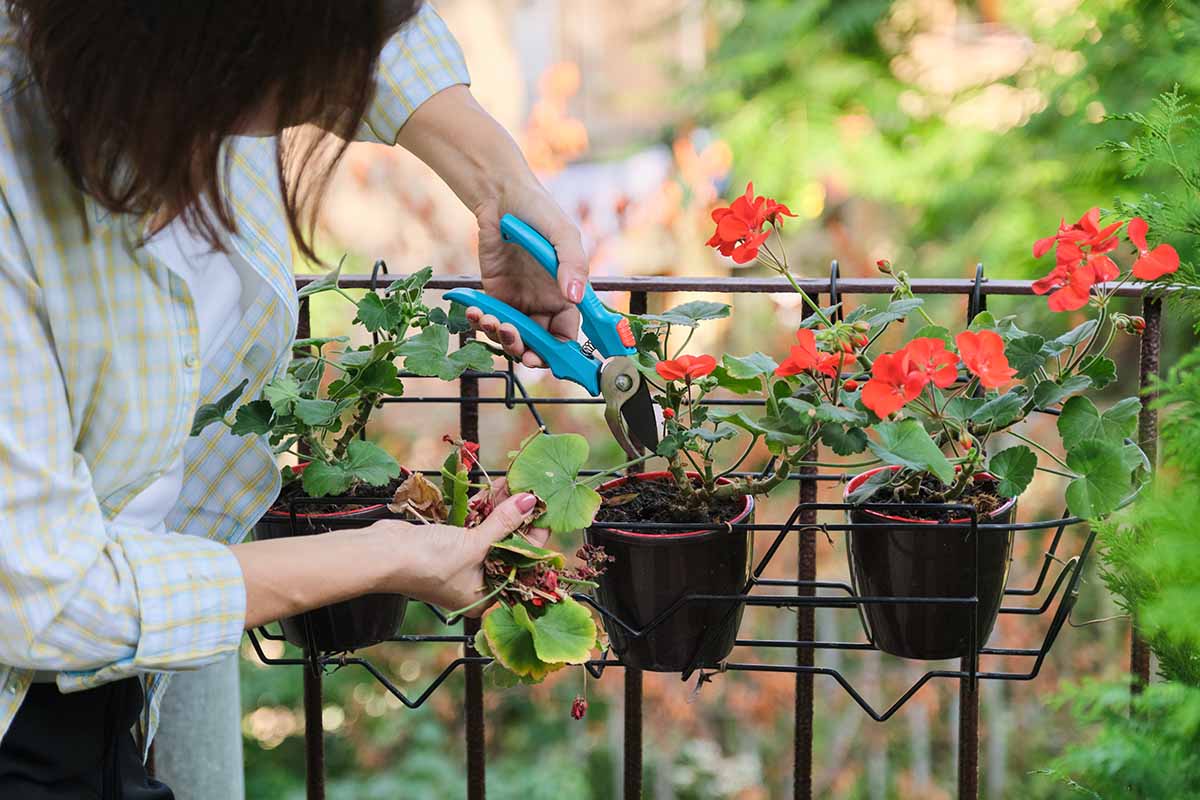
Okay, the answer is pretty nebulous, but there are a few hard and fast rules for pruning.
If you overwinter your plants indoors or grow them as perennials, then you absolutely must prune twice a year, one time in the spring and once again in the fall.
You should also deadhead the flowers when they’ve begun to fade or your plant will eventually stop producing blossoms.
The tools you need depend on the size of your plant and whether you are deadheading or pruning. Deadheading can be done with just your fingers, though you’ll be able to create a cleaner cut with scissors or secateurs.
Larger perennials that have been growing for years call for hand pruners, while annuals can be pruned with scissors.
Serious gardeners swear by Felco pruners for good reason. They last for decades, they maintain a sharp edge, they make clean cuts, and they have an ergonomic design that reduces hand fatigue.
I carry the F2 size with me every time I go out into the garden because you never know when you might need to lop something off.
They cost a bit more than other pruners, but in this case I firmly believe that you get what you pay for. To grab a pair for your gardening kit, pop on over to Amazon.
Deadheading
Deadheading encourages more blossoms. In general, when blooms fade, the plant thinks it has completed that part of its reproductive cycle and it stops sending out flowers.

As soon as the blossoms start to turn brown, it’s time to remove them. This doesn’t hurt the plant at all, and since it encourages more blossoms, don’t hesitate to be brutal about your deadheading schedule, and do it often.
Don’t wait until the entire head is brown. If about half of the flowers have started to turn, off with their heads!
To remove spent blossoms, snap the stem off well below the flower head near the base of the stem. You can also use scissors or pruners to do this.
Overwintered Plants
For geraniums stored as dormant plants during the winter, prune off all of the flowers and flower stems, along with about a third of the length of each stem, before you place the plant in its winter home.
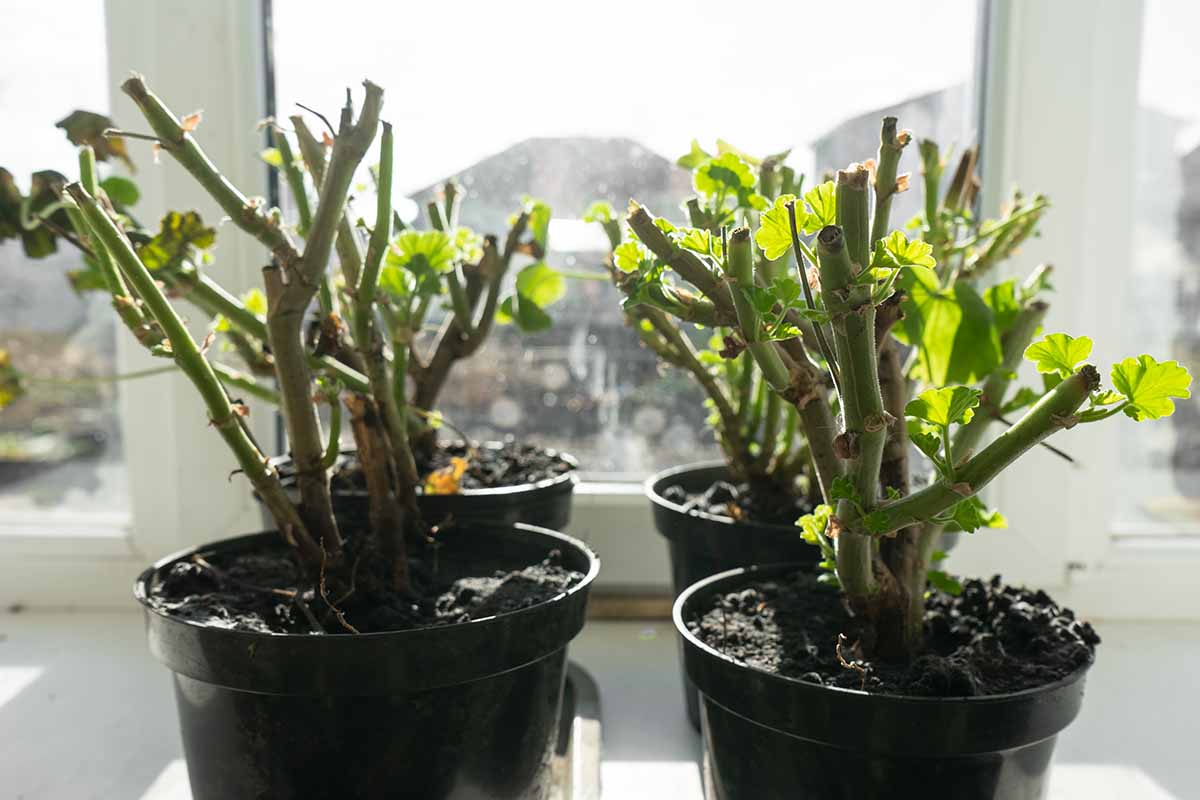
You can do this while the plant is still in the ground or after you’ve removed it and washed the soil away from the roots.
Removing extra stems and growth reduces the burden on the roots and stems, which only have so much capacity to store nutrients to feed the leaves.
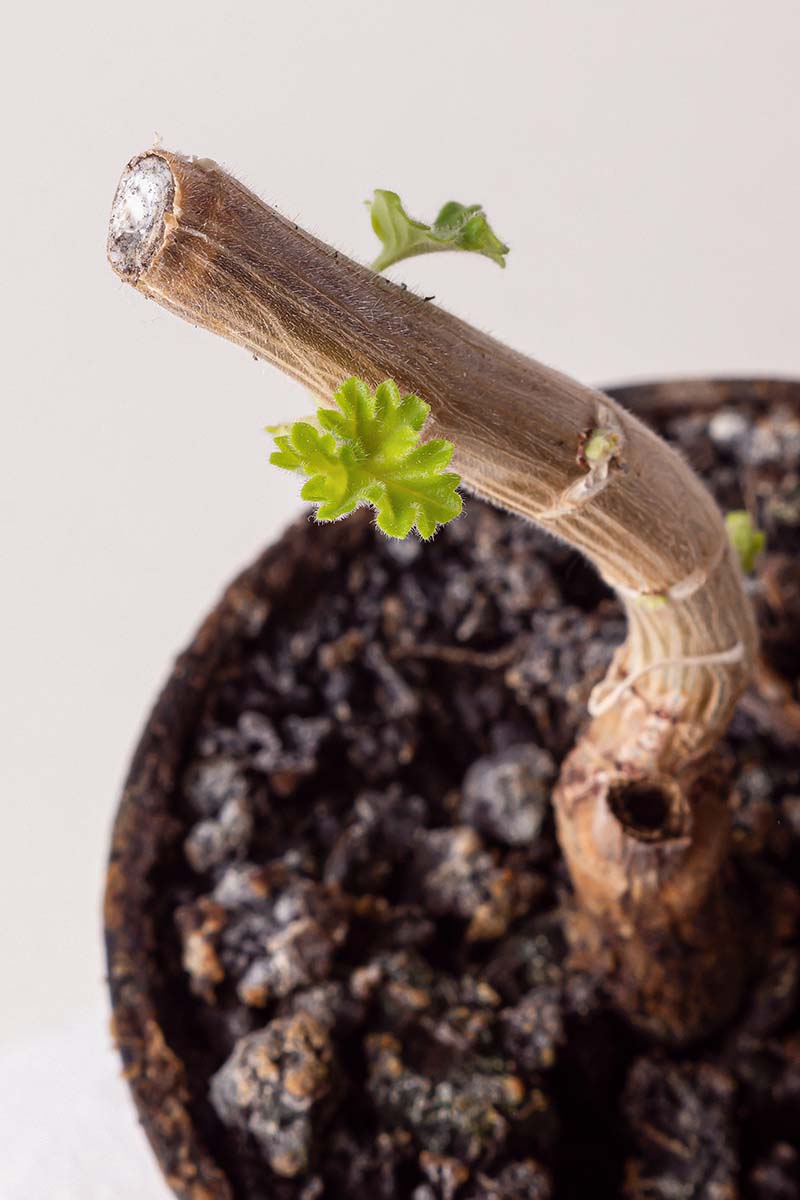
In the spring, take the pruners out again and trim away any dead tips or dead foliage. Dead tips will be brown or black and shrunken.
Don’t worry, this dead tissue is totally normal. New, bushy growth will emerge below where you trim the stems.
Annuals
Garden geraniums need little in the way of pruning if you’re just growing them during the spring and summer.
You can clip back any leggy growth and any stems that grow exceptionally long throughout the growing season to create a more pleasing shape.

You should also always remove any broken stems or any that show signs of disease or pest infestation. Use a pair of scissors or clippers to remove any growth and make your cuts above a leaf node.
Otherwise, feel free to leave them to their own devices, and remove them from the garden at the end of the season.
Perennials
If you keep your geraniums year-round, whether indoors or out, you’ll want to trim them in the spring and fall. Perennial types need the most pruning because they tend to become leggy over time, with long, sparsely covered stems.
You need to provide them with some shaping to encourage a tidy form and profuse flowering.
Sometime around October, take a pair of clippers and cut the entire plant back by about a third. Extremely long branches should be cut back in line with the rest of the plant.
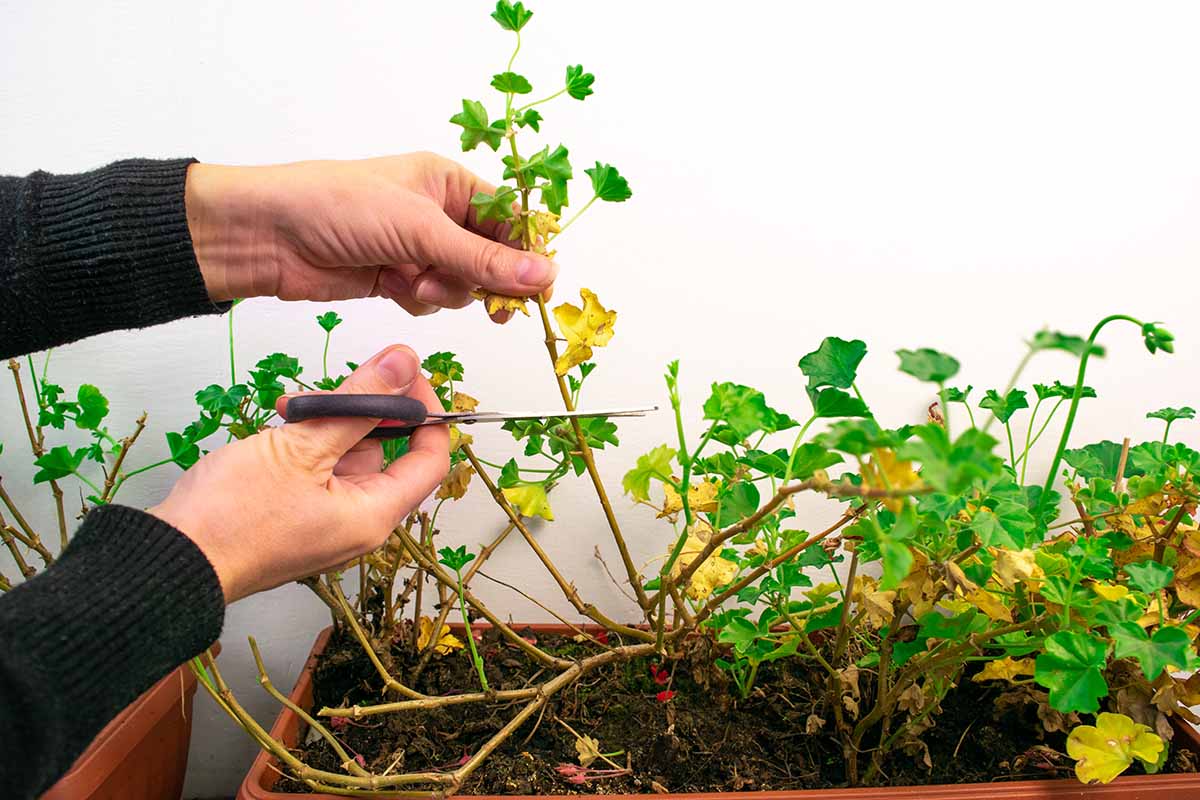
These plants don’t go dormant during the winter, but they will stop blooming as much – or at all – during the shorter days of the year.
Pruning them back encourages them to start some new growth and send out blossoms when the days start to lengthen. It also creates a pleasant shape.
Next, take out any crowded growth. Branches that cross each other should be thinned, and any branches with primarily yellow foliage should be trimmed back below the lowest leaf.
In the spring, all you need to do is a little maintenance. Prune out any leggy or crowded branches, and do a little shaping.
Keep Your Geraniums in Tip-Top Shape
One of the nice things about geraniums is that they don’t require much work to keep them looking their best. Unless you grow them as perennials, you can sort of forget about them except for a little bit of deadheading.
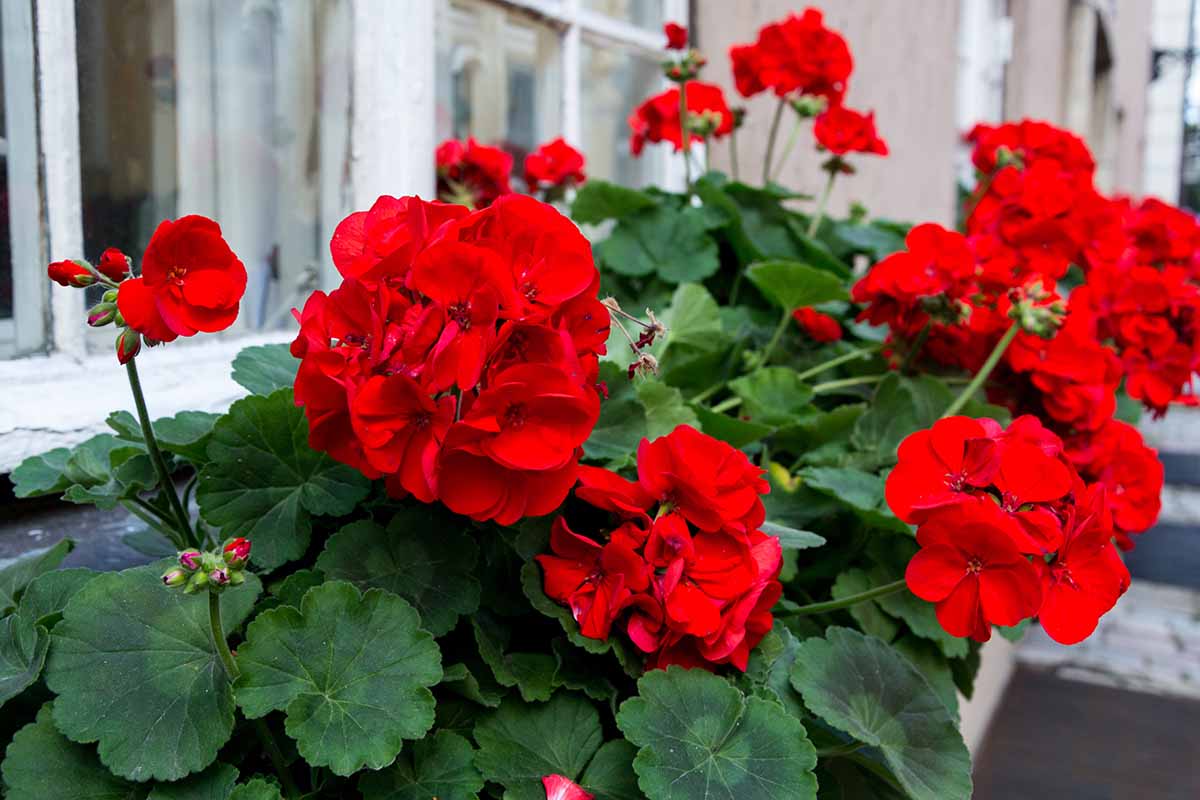
What kind of geranium are you growing? Do you keep it in a container or is it planted in the ground? Are you overwintering your plants? Let us know in the comments section below!
If you’re looking to make the most of growing geraniums, we have a few other guides that you might find helpful. Check out some of the following for more information:

